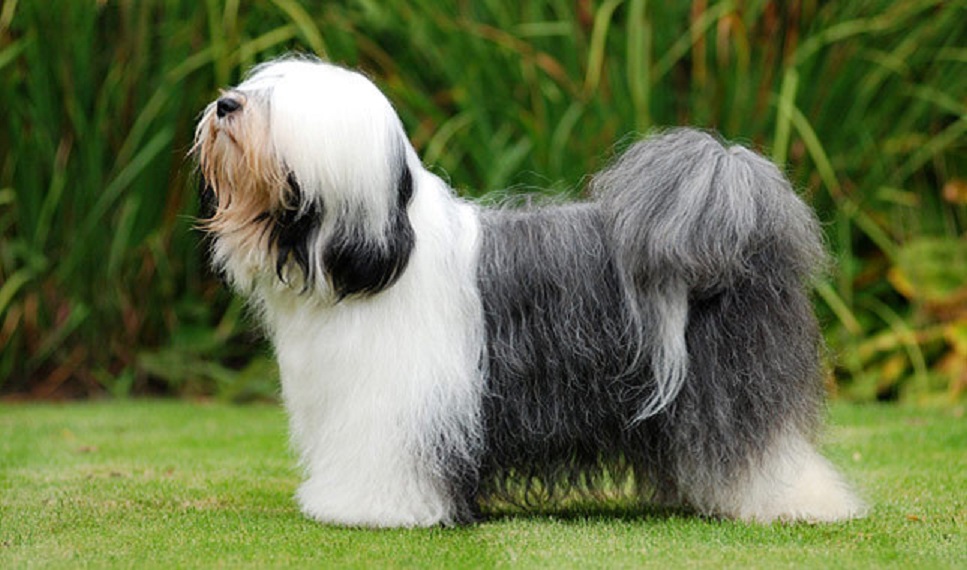
Tibetan Terrier

Navigate through the tabs
Navigate through the tabs below to view the breed's info of your interest.
The breed's info is divided in four sections; namely:
the breed's history ,
the breed's main stats ,
the dog's potential health issues
and finally, how the breed scored in 26 different categories.
All the above information should give you a respectively good overview for the dog of your interest.
Dog Breed's Main Info
The Breed's History:
Because of the geographically isolated location of Tibet, Tibetan Terriers were kept purebred for over 2000 years. Monks and families referred to the ancient breed as "the little people", for they were highly valued as companions who were eager to assist in protecting properties and flocks.
Since the dog was considered a bringer of luck, mistreating or selling a Tibetan Terrier was believed to cause bad luck to both family and village.
The first Tibetan Terrier to come to Europe came with Dr. A.R.H. Greig of England in 1922. She was given a gold and white female puppy "Bunti" for successfully performing an operation on a patient. After acquiring a second male "Rajah", Dr. Greig established a kennel and began to breed them.
The first litter was born in 1924, registered as Lhasa Terriers. In 1930, the Kennel Club of India changed the breed's name to Tibetan Terrier. The first Tibetan Terriers in the USA were imported in 1956 by Dr. Henry and Mrs. Alice Murphy of Great Falls, Virginia. In 1973, the breed was recognized by the American Kennel Club and was classified into the non-sporting group.
Tibetan Terriers are related to and have contributed to the development of other breeds, including the Shih Tzu, Lhasa Apso, Tibetan Spaniel, Polish Lowland Sheepdog, among others.
Country of Origin:
Tibet
Breed Group:
Companion
Height:
1 foot, 2 inch. to 1 foot, 4 inch. (35,56 to 40,64 cm)
Weight:
20 to 24 pounds (9,07 to 10,89 Kg)
Life Span:
12 to 15 years
Potential Health Issues:
Lens Luxation,
Hip Dysplasia,
Progressive Retinal Atrophy (PRA)
Adaptability
Apartment Living:
First Time Owners:
Sensitivity:
Being Alone:
Cold Weather:
Hot Weather:
Friendliness
Affection With Family:
With Kids:
With Dogs:
With Strangers:
Health and Grooming
Shedding:
Drooling:
Easy To Groom:
Overall Health:
Weight Gain Potential:
Size:
Training
Easiness:
Intelligence:
Mouthiness:
Prey Drive:
Barking or Howling:
Wanderlust:
Need For Exercise
Energy Level:
Intensity:
Exercise Needs:
Playfulness:
Our Mobile Application
Check out Our Mobile Application "Dog Breeds Central"
